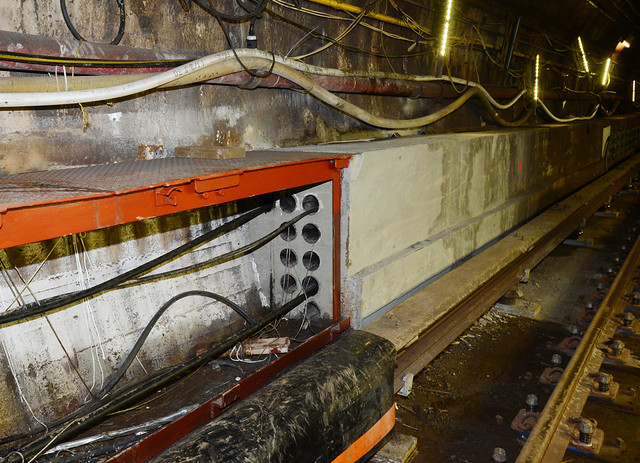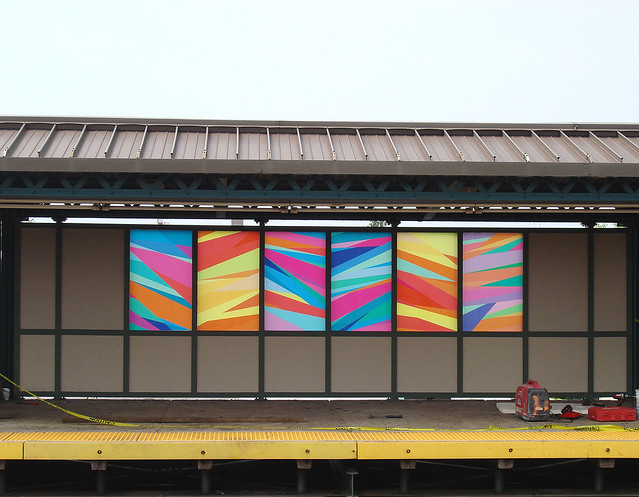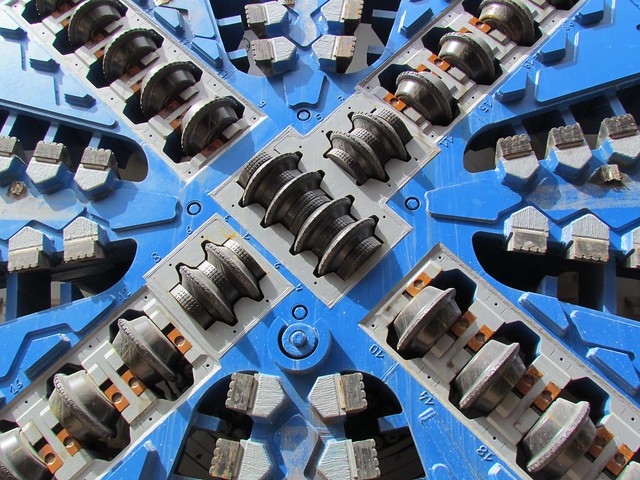
There’s a whole lotta fixin’ and fortifyin’ going on in the Greenpoint Tube. (Photo: Marc A. Hermann / MTA New York City Transit)
While traveling from Herald Square to Chinatown last night for dinner, I had the opportunity to ride the R train for the first time in this post-Sandy shutdown world. I enjoyed the R160s, but south of 14th St., the ride became something of a carnival trip. The conductor would flicker the lights while announcing repeatedly that the train would not be running south of Whitehall St. You’d have to be asleep to miss the ruckus.
As the work on the Montague St. tube passes through its second month, subway riders seem to have adjusted. It’s too early to tell the overall impact of the shutdown, but I’ve definitely noticed larger crowds at Canal St. and more people waiting on the 4th Ave. platform at Atlantic Ave. for a Bay Ridge-bound train. It’s possible that rides are shorter as the trip over the bridge is faster than the R’s winding route through Lower Manhattan and Downtown Brooklyn, but multi-seat journeys just feel more annoying.
The R train can sustain such a shutdown though because its ridership is relatively low. What about those other routes providing key connections between Brooklyn and Manhattan that were also damaged during Sandy? Earlier this week, reporters had an opportunity to grill MTA CEO and Chairman Tom Prendergast on future potential plans for Sandy-related shutdowns, and he hedged a bit. Prendergast was in charge of Transit during and after the storm, and he knows more about the state of the infrastructure that just about anyone. He wasn’t though in the mood to share much.
During the back-and-forth, he discussed the state of the other East River train tunnels, noting that nine of the tubes were damaged “pretty substantially.” “We know,” he said, “there are problems in the other tubes.” Problems is never good word when talking about metal surfaces and electronic components exposed to saltwater.
Still, Prendergast wouldn’t give much information out on the status of the various tubes. He said that the Clark St. (2/3), Montague (R) and Cranberry St. (A/C) Tunnels bore the brunt of the flood. We also know from first-hand reports last year that the 53rd St. tunnel sustained water damage and that the L train’s 14th St. tube was inundate, but Prendergast didn’t mentioned those two tunnels by name.
He did say, however, that work won’t start in any other tubes until Montague is back up and running. “You really can’t deal with those [other tunnels] until you deal with these,” he said, referring to the ongoing R and G train work, “because you can’t close or limit capacity in too many tubes at one time or you actually reduce the level of service.”
As reporters pressed him to explain the damage, Prendergast remained vague. “We don’t believe they’ll be the same order of magnitude, “he said, but the flooding occurred in nine out of 14 under-river tubes. Anything we can do on nightly closures is where the focus will be and then we look at weekend closures and then what we call an out-of-phase which is a permanent seven days ago for a number of months…Hopefully we can do it with nightly closures.
If all of this reminds you of Donald Rumsfeld’s famous quote about the known knowns and known unknowns, well, I can see why. Something is coming, but we don’t know what. At some point, possibly in mid-to-late 2014 as the work on the Montague St. tunnel begins to wrap, we’ll hear more, but for now, the threat of future closures, to some degree or another, remains. Meanwhile, the MTA is racing against any future hurricane that could yet again bring floodwaters into the subways. Cross your fingers; hope for the best.

 Due to Hurricane Sandy, the MTA’s new Fastrack program suffered a premature end in 2012. The November treatments were canceled as the MTA worked first to restore subway service and then to repair the transit system. Despite this road bump, Fastrack will be back in 2013, and yesterday, New York City Transit unveiled to me the full schedule of work lined up for the coming year.
Due to Hurricane Sandy, the MTA’s new Fastrack program suffered a premature end in 2012. The November treatments were canceled as the MTA worked first to restore subway service and then to repair the transit system. Despite this road bump, Fastrack will be back in 2013, and yesterday, New York City Transit unveiled to me the full schedule of work lined up for the coming year.




